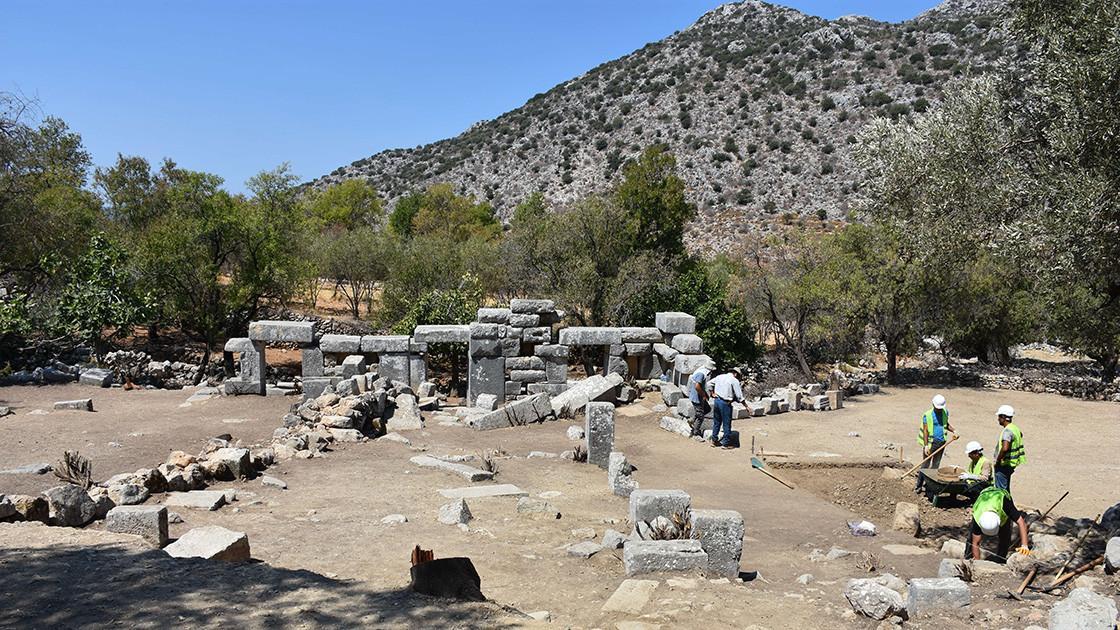
Archaeological research and documentation works at Phoenix Ancient City in the western province of Muğla’s Marmaris district have concluded for 2025, yielding remarkable discoveries that shed new light on the region.
This year’s investigations revealed an Early Iron Age tumulus, distinctive stepped pyramidal tombs, ancient farms, olive oil workshops and Byzantine-period structures, expanding the understanding of both funerary traditions and rural life in the Bozburun peninsula.
The excavations focused on the northern and western countryside of the ancient city. Among the most significant findings were the stepped pyramidal tombs, unique to the Bozburun Peninsula, and the first-ever identification of an Early Iron Age tumulus in the area.
In addition to the funerary structures, the excavations documented agricultural remains dating back to the 4th century B.C.
The uncovered farmsteads and olive oil workshops point to a thriving rural economy in antiquity. Scholars note that such finds demonstrate the deep agricultural roots of the region and its longstanding integration into Mediterranean trade and subsistence networks.
The 2025 campaign also brought to light previously unrecorded elements of Phoenix’s multi-layered heritage. Researchers documented a monumental (Nymphaion) located by a natural spring, as well as newly identified Byzantine churches and chapels.
Looking ahead, the project team announced that fieldwork will continue in 2026 with surface surveys at the ancient site of Thyssanoys near Söğüt village, alongside planned systematic excavations at Phoenix itself.
The Bozburun Peninsula first saw settlement in the Early Archaic period, as part of Caria and later came under Rhodian influence during the Hellenistic period. Built around a fortified acropolis at Hisartepe, the city covered about 205 hectares. Phoenix remained inhabited through the Roman and Byzantine eras.
Later, the city fell under the Menteşe Beylik and eventually the Ottoman Empire.